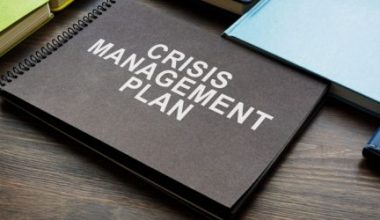A common discussion starter is “Is all publicity good publicity?” Publicity is the lifeblood of any brand. Some argue that any kind of attention—positive or negative—brings the brand popularity and recognition, which is eventually beneficial. Some warn about the possible harm that unfavorable PR can do. However, as a brand or startup, PR increases your brand awareness and visibility. Let’s investigate this idea and see how good PR can help your brand and how bad PR can be detrimental to your brand.
KEY POINTS
- Publicity can bring attention to a brand, but whether it’s good depends on how it’s handled.
- Negative PR can damage trust and reputation, leading to long-term consequences. That being said, when PR stunts are done to increase a brand’s visibility negatively, for example, a brand using a scandal to boost productivity and visibility, it can be very detrimental to the brand if care is not taken.
- Brands must prioritize building trust and authenticity to handle negative PR storms. I further emphasized this in the conclusive part of this article
- Proactive reputation management and transparent communication are essential in handling crises. As a brand, you need to carefully manage your reputation and avoid anything that can be detrimental to your brand.
- Success lies in finding the right balance between visibility and reputation management.
All Publicity Is Good Publicity
The phrase “all publicity is good publicity” implies that any positive or negative attention is beneficial to a person, product, or service. While this statement contains some truth, it is not always correct. In today’s information-saturated world, the nature and context of PR can significantly influence its total impact.
The Case for “All Publicity is Good Publicity”
Supporters of this approach argue that any sort of PR helps keep a brand relevant in customers’ minds. They claim that in today’s world, where attention spans are short, even unfavorable PR may create interest and debate. They say that increased visibility can lead to higher brand recognition and, eventually, increased sales.
The saying, “all publicity is good publicity” is oversimplified and fails to adequately convey the complex nature of present-day public relations and media. While PR of any kind has the potential to raise awareness and attention, its overall impact is mostly determined by its type and context. A brand may suffer significant bad press effects, such as reputation harm, missed opportunities, and legal challenges. Businesses must, therefore, take great care to maintain their public image and react tactfully to any unfavorable press they may receive.
Moreover, supporters contend that, with careful management, bad press can occasionally be used to a brand’s benefit. They cite instances where businesses have handled crises well and come out stronger by exhibiting accountability, openness, and dedication to change. In many situations, the original bad press might have served as a spark for improvement, improving the brand’s standing over time.
Let me remind you, using Nike as an example, of the recommendation they received after pulling a PR stunt.
“Let's talk about the time when Nike faced a storm of negative pr. Back in 2018, they launched an ad campaign featuring Colin Kaepernick, the NFL player known for kneeling during the national anthem to protest racial injustice. The move sparked intense controversy, with some consumers threatening to boycott Nike products and burning their sneakers in protest. It seemed like a PR nightmare for Nike, but they stood firm behind their decision, embracing the slogan "Believe in something. Even if it means sacrificing everything." Surprisingly, the backlash didn't spell doom for Nike; instead, it propelled them into the spotlight, sparking a surge in sales and solidifying their reputation as a brand unafraid to take a stand. In this instance, Nike's bold move and the ensuing controversy proved that sometimes, even negative PR can lead to positive outcomes.”
The Dangers of Negative PR: An Untold Truth
Though potentially attractive, the truth can be more complex than that.
In this modern, globally interconnected digital world, negative news can spread swiftly and have a significant impact.
Social media platforms magnify positive and negative feedback, making it difficult for firms to maintain narrative control when a crisis arises.
Unfavorable press has the potential to weaken customer’s confidence and harm a brand’s reputation, which can have long-term effects like lower sales and customer attrition. It can be challenging to restore a damaged reputation in a time when customers have an abundance of options and information at their disposal.
Furthermore, the emotional consequences of unfavorable PR should not be overlooked. Studies show that negative brand information is more likely to stick in the minds of customers and influence them than positive information.
Negative PR can generate long-term connotations in the minds of consumers, overshadowing any great qualities the business may have.
Besides, the cost of managing a crisis caused by negative press can be high, both financially and in terms of resources. The aftermath of unfavorable press can put a strain on a brand’s resources and revenue, requiring it to hire crisis management experts and spend in public relations campaigns to recover trust.
How to Handle Negative PR Properly?
It is impossible to totally avoid negative PR, and every business could face it at some point in its growth. But there are a few factors that can stop a crisis from getting worse, and every business needs to be aware of them.
#1. Awareness of negative PR
Firstly, the company needs to be aware of the most typical possible sources of bad PR.
And while the reasons that can set off a crisis vary depending on the industry, there are several basic issues that come up again and time again. Recognizing them can quickly stop things from getting worse.
#2. Being Aware of Your Strengths and Weaknesses
Every business has strengths and weaknesses when it comes to its goods or services. Having an in-depth awareness of both sides of the issue helps to anticipate potential problems and promotes improvement where it is needed. Understanding where bad PR can emerge is made easier by addressing the team’s shortcomings. As a result, once it is brought to light, a prompt action against the threat can be taken.
Negative PR and Crisis Communication
As I stated earlier, a good PR firm is ever-ready for challenges to its clients. Any part of the brand could witness crisis, which could eventually affect the whole organization. Therefore, comprehensive coverage of every aspect is required to enable the business to address any possible threat.
You’ll see that I clarified the widely held belief about this context in the above. Up to 90% of the publicity stunts that companies conduct these days in an attempt to increase their visibility end up failing or changing the public’s perception of the brand. You are already aware of what this means—completely disastrous!
I don’t need to remind you of what happened to Phinehas .T. Barnum, the man behind the popular quote “All Publicity Is Good Publicity.” and how this later affected his brand seriously after he pulled a PR stunt that was detrimental to his career.
“There’s no such thing as bad publicity,” as the saying goes, but is it really true?
According to the belief, it’s a positive thing if people are talking about you or your brand. Even if they are saying negative things, the publicity should still be positive because it will keep your brand current by keeping people’s minds occupied with your name. Is it true all the time, though?
In my opinion, it relies on the news and the nature of what you offer
What Is the Saying “No Publicity Is Bad Publicity.”?
First of all, Phinehas.T. Barnum was the originator of this statement. But it turned out to be entirely not true as opposed and comprehensively disproved and buried by the Scottish brewer, BrewDog. Don’t forget what AL & Laura Ries said and I quote
“It’s PR that needs to be creative. It’s PR that needs to be new and different. It’s PR that needs to be original. The best way to establish a brand is to create a new category, and creating a new category requires creative thinking of the highest order.” – Al & Laura Ries
Contentfac.com
What Is an Example of Any Publicity Is Good PR?
All publicity increases awareness, and if we forget that the visibility we get comes from negative PR, we tend to interpret it as a positive signal—hence the saying that all publicity is good PR.
Not yet understandable? Let me illustrate with an example.
A recent example of “any publicity is good publicity” involves a celebrity who sparked controversy with a controversial statement. Despite facing backlash, the incident generated widespread media coverage and increased attention on the celebrity’s projects. As a result, their popularity and interest in their work surged, proving that even negative publicity can benefit a celebrity’s career.
What Are the 3 Types of Publicity?
The three types of publicity are
- News outlets
- Press releases: A press release is a statement you share with members of the media.
- Events: This includes getting your company involved in events or workshops that mean something to you and your organization.

What Does Good Publicity Mean?
In effective public relations, negative evaluations and bad news releases are not accepted. In contrast, it ensures that the right message is communicated in a more subtle, approachable, and clear way.
“PR is performance recognition” – Douglas Smith
contentfac.com
How Do You Get Good Publicity?
Well, if you expect me to answer this question using a lengthy or outlined solution; then I am sorry to disappoint you. I would rather say getting good publicity is all about using the necessary media outlets or, better still, a professional PR firm.
Do you know that philanthropic acts can also give you good publicity?
Well, it depends—-if you are trying to pull a PR stunt, the public would easily figure that out.
Just like presidential candidates do whenever they contest for elections. Who doesn’t know that it is a PR stunt to drive more votes and gain attention which they eventually abuse when they get to power. (Africa predominantly)
“Below, you’ll find a comprehensive checklist that serves as a reference and assistance for the one above.“
How Do You Make Good Publicity?
To make good publicity, focus on showcasing positive aspects of your brand through strategic communication and engagement. Highlight your brand’s unique selling points, share success stories, and connect with your audience authentically through various channels. Additionally, prioritize delivering exceptional products or services and cultivating positive relationships with customers and stakeholders. By consistently demonstrating value, transparency, and integrity, you can build a strong reputation and generate positive publicity that resonates with your audience.
What Is the Difference Between Good PR and Bad PR?
The answer to this question is self-explanatory.
The goals of the PR campaign hold the key to the solution. Good public relations (PR) campaigns require careful planning and execution. Conversely, an awful or poor public relations campaign is one that is poorly planned and executed, often yielding negative results. Nonetheless, I crafted a detailed template showing other differences between good PR and bad PR below.
“Striking the Balance: Navigating the Nuances of Publicity”
At this juncture, this blog-post comes to a halt. But before taking your eyes off this article, do both yourself and I a big time favor. Get a pen and writing material (paper) and write down some interesting points that struck out for you. Be it from the first paragraph to the last paragraph, or from the middle paragraph. Just make sure you try to grab something because the term “publicity.” is a generic term. This justifies the fact that everyone needs publicity (good PR) EITHER in your workplace OR your enclosure. This isn’t a brand thing, it applies to everyone be it in your career, workplace, institution or even a defined enclosure.
Whether you are a large corporation or a startup, careful thought should go into your public relations strategy because it affects how the public views you. “Everything you do or say is public relations.” – Unknown
Let me refer you to my article on PR BUSINESS: Shaping Perceptions and Building Brands Through Public Relations (The People’s Voice)
Related Articles
- Best PR Firms: Discovering the Powerhouses Behind Brand Success.
- Best Social Media Customer Service Practices for 2024 (Detailed Guide)
- CONTENT MARKETING: A User-Guide to Developing Your Business






